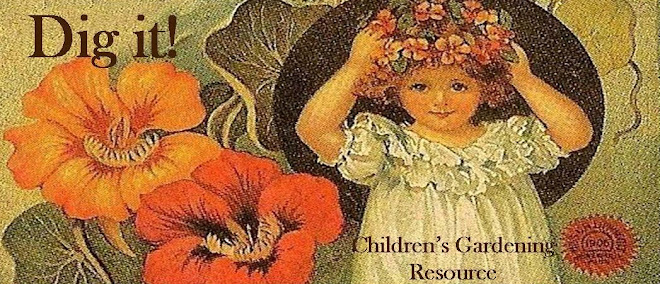 Trying to stay on theme with Gnome Week (fortunately only celebrated on my blog), I thought I might include my friend Freya's miniature garden for inspiration. Although she created hers in a large concrete container, this could easily be replicated right on the ground within an existing garden or a window box. Children would have tons of fun designing their own version, or have fun discovering one in a small corner of the yard or under a tree that you've built. Aside from the shear joy a garden like this provides, a truly fun gardening project stimulates the imagination, encourages artistic and creative expression, and inspires healthy outdoor play. All good stuff.
Trying to stay on theme with Gnome Week (fortunately only celebrated on my blog), I thought I might include my friend Freya's miniature garden for inspiration. Although she created hers in a large concrete container, this could easily be replicated right on the ground within an existing garden or a window box. Children would have tons of fun designing their own version, or have fun discovering one in a small corner of the yard or under a tree that you've built. Aside from the shear joy a garden like this provides, a truly fun gardening project stimulates the imagination, encourages artistic and creative expression, and inspires healthy outdoor play. All good stuff.
- several bird houses
- dwarf arborvitae, boxwood, and evergreens
- dwarf perennials and groundcovers: columbine, heucherella, creeping jenny, hens and chicks, creeping thymes, irish moss, veronicas (check any Steppables display at your local garden center for ideas)
- spring bulbs and annuals: tete-a-tete daffodils, dianthus, anything else within scale and colorful and/or fragrant
- larger and smaller stones
- plastic saucer or 1 gallon pot for a pond
- pea gravel for mulch and line their little gnome walkways

Detail of gnomes by the pond in the winter.

Those pics are way cool.
ReplyDeleteI stopped by to thank you for commenting on my garden blog the other day and ended up following because of this post.
Keep up the good work.
Thank you! What a great compliment. And it's nice to see someone else in the follower box besides myself.
ReplyDelete